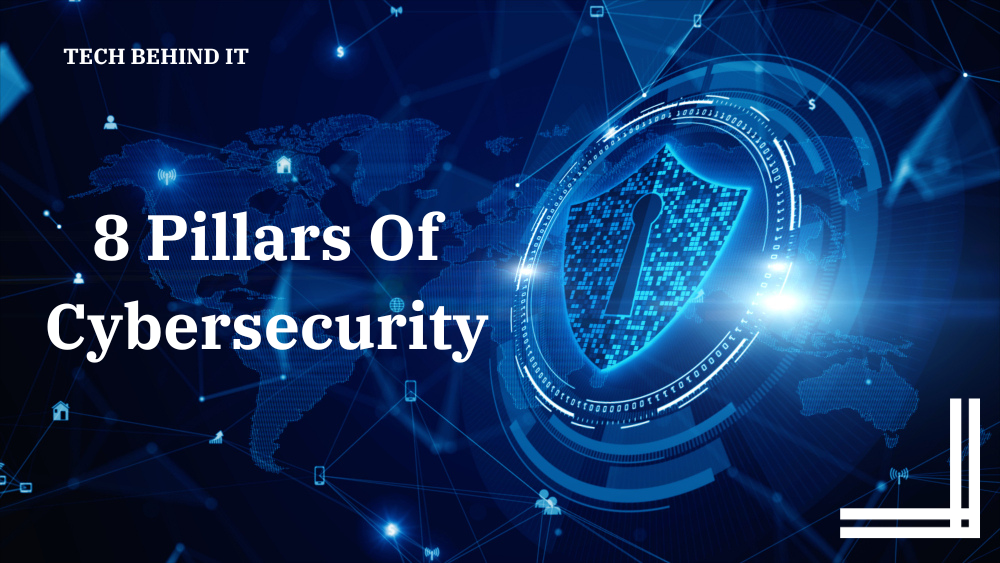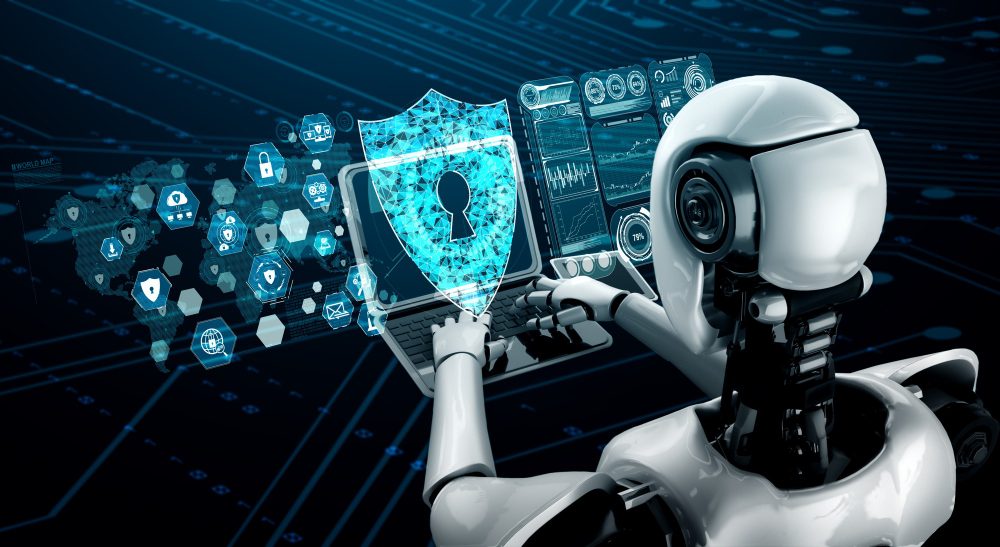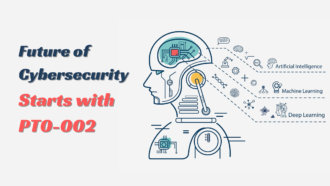What Are The 8 Pillars Of Cybersecurity?
- 1 8 Essential Pillars of Cybersecurity
- 1.1 Application Control
- 1.2 Encryption
- 1.3 Patch Operating Systems
- 1.4 Network Security
- 1.5 Awareness and Training
- 1.6 Multi-factor Authentication
- 1.7 Risk Management
- 1.8 Security Architecture
- 2 Future of Cybersecurity
- 2.1 1. Quantum Computing and Cybersecurity: A New Frontier
- 2.2 2. Artificial Intelligence (AI) in Cybersecurity: The Double-Edged Sword
- 2.3 3. Rise of Cyber-Physical Systems: Securing the Convergence
- 2.4 4. Cloud Security: Navigating the Shared Responsibility Model
- 2.5 5. 5G Technology and Cybersecurity Challenges
- 2.6 6. Human-Centric Security: Addressing the Weakest Link
- 2.7 7. Regulatory Landscape: Adapting to Evolving Standards
- 3 In Conclusion
- 3.1 FAQs
- 3.1.1 What is the importance of multi-factor authentication in cybersecurity?
- 3.1.2 Why is encryption essential for cybersecurity?
- 3.1.3 How does risk management contribute to cybersecurity?
- 3.1.4 What role does cloud security play in cybersecurity?
- 3.1.5 How does human error impact cybersecurity?
- 3.1.6 What are the challenges associated with 5G technology and cybersecurity?
- 3.1.7 How does application control enhance cybersecurity?
- 3.1.8 Why is network security important in cybersecurity strategies?
- 3.1.9 What is the significance of AI in cybersecurity, and what challenges does it pose?
- 3.1.10 How does regulatory compliance impact cybersecurity efforts?
- Foundational Pillars: Cybersecurity strategy relies on foundational pillars like application control, encryption, and patching systems to establish robust defences against cyber threats.
- Emerging Trends: The future of cybersecurity involves adapting to emerging trends such as quantum computing, AI-driven threats and securing cyber-physical systems to stay ahead of evolving risks.
- Human-Centric Focus: Prioritizing human-centric security through education, training, and awareness programs is crucial to addressing the weakest link in cybersecurity defences and fostering a resilient organizational culture.
In today’s rapidly evolving digital landscape, the interconnectedness of our world presents both incredible opportunities and unprecedented risks. As technology becomes increasingly integrated into our daily lives, protecting our digital assets from malicious threats is becoming more critical than ever. Cybersecurity plays a vital role in establishing trust, protecting privacy, and ensuring stability.
The pillars of a robust cybersecurity strategy are the foundation on which organizations build their defences against various cyber threats. These strategic pillars of information security include a set of protocols or technologies and a comprehensive framework for proactive planning, resilient infrastructure, and dynamic threat intelligence. The team at Cybersecurity Fresno can help businesses to improve their cybersecurity strategy.
Furthermore, exploring innovative tools like Lumify Work Sydney could be instrumental for organizations seeking enhanced collaboration and streamlined communication. Lumify Work Sydney offers a sophisticated platform for seamless team collaboration, integrating project management, communication, and document sharing to boost productivity and efficiency in the fast-paced world of cybersecurity.
In this article, we will explore the essential pillars of security.
8 Essential Pillars of Cybersecurity
Application Control
Application control is one of the key cybersecurity pillars. Organizations can have greater control over the software and applications installed and run on their systems by implementing application control measures. It helps to prevent unauthorized or potentially malicious applications from being executed, reducing the risk of cyberattacks and data breaches.
Application control also allows organizations to enforce policies regarding specific applications, ensuring employees only use approved software that meets security standards. By effectively managing and controlling applications, organizations can significantly enhance their overall cybersecurity posture and protect sensitive information from falling into the wrong hands.
Encryption
Encryption is an essential aspect of cybersecurity. It refers to converting sensitive information into an unreadable format (ciphertext) using algorithms. This ciphertext can only be decrypted with the proper key. Encrypting data helps organizations prevent unauthorized access to sensitive information.
Even if someone intercepts the data, they cannot understand it without the decryption key. Encryption is vital in safeguarding sensitive information such as personal data, financial transactions, and intellectual property. Implementing robust encryption protocols and regularly updating encryption keys are essential for maintaining the confidentiality and integrity of data in today’s digital landscape.
Patch Operating Systems
Regularly updating and repairing operating systems is crucial to address any potential vulnerabilities that cybercriminals often exploit to gain unauthorized access or launch attacks on computer systems. Organizations can promptly apply patches and updates to ensure their operating systems have the latest security features and protections.
It reduces the risk of potential breaches and helps maintain the integrity and confidentiality of sensitive information. In addition, organizations should establish a process for monitoring and managing patches to ensure that all systems are up-to-date and protected against emerging threats.
Network Security
A strong cybersecurity strategy requires prioritizing network security. This involves ensuring the network and its data remain secure, confidential, and available. Measures must be implemented to prevent unauthorized access, ensure secure communication between devices and systems, and quickly identify and respond to threats or attacks.
Network security measures can include firewalls, intrusion detection systems, encryption protocols, and regular monitoring and auditing of network activity. Organizations can significantly reduce the risk of cyber threats and better protect their sensitive information by prioritizing network security as part of their cybersecurity strategy.
Awareness and Training
Cybersecurity is essential for companies to safeguard their sensitive information and systems against cyber threats. To ensure this, employees must be trained and aware of the best practices for online security. This includes identifying phishing attempts, creating strong passwords, and being cautious while downloading or clicking on suspicious links.
Regular training sessions should be conducted to keep employees up-to-date on the latest cybersecurity threats and techniques. By fostering a culture of awareness and providing ongoing training, businesses can significantly reduce their vulnerability to cyber-attacks and safeguard their valuable assets.
Multi-factor Authentication
Robust cybersecurity requires multi-factor authentication, which involves providing multiple forms of identification to access sensitive information or systems.
By combining something the user knows (such as a password), something they have (such as a fingerprint or smart card), and something they are (such as biometric data), multi-factor authentication helps to ensure that only authorized individuals can access critical resources. This significantly reduces the risk of unauthorized access and protects against data breaches or cyberattacks.
Risk Management
Risk management is crucial for comprehensive cybersecurity. It involves identifying potential risks and vulnerabilities to an organization’s information systems and data and assessing the potential impact and chances of these risks. By understanding the risks, organizations can then develop strategies to mitigate them.
This may involve implementing security controls and measures, conducting regular risk assessments, and establishing incident response plans. Effective risk management is crucial in safeguarding sensitive information and ensuring the overall security of an organization’s digital assets.
Security Architecture
Comprehensive cybersecurity requires a robust security architecture. This involves designing and implementing systems, processes, and controls to protect an organization’s information assets from unauthorized access, use, disclosure, disruption, modification, or destruction.
A well-designed security architecture considers all aspects of an organization’s IT infrastructure, including networks, servers, applications, and user devices. It should incorporate multiple layers of defence, such as firewalls, intrusion detection systems, and access controls, to detect and prevent potential cyber threats. A robust security architecture provides a strong foundation for ensuring the confidentiality, integrity, and availability of an organization’s sensitive data and systems.
Future of Cybersecurity
1. Quantum Computing and Cybersecurity: A New Frontier
Quantum computing is on the horizon, presenting both unprecedented opportunities and challenges in the realm of cybersecurity. As quantum computers have the potential to break widely used encryption algorithms, the cybersecurity landscape must evolve to adopt quantum-resistant cryptographic techniques. Organizations are investing in research and development to stay ahead in this quantum era, ensuring the security of sensitive data and communications.
2. Artificial Intelligence (AI) in Cybersecurity: The Double-Edged Sword
AI is revolutionizing cybersecurity, offering advanced threat detection and response capabilities. However, as AI becomes more sophisticated, so do cyber threats. Adversarial AI, where attackers leverage AI to enhance their malicious activities, poses a significant concern. Striking the right balance between AI-driven security solutions and safeguarding against AI-driven attacks is a critical focus for the future.
3. Rise of Cyber-Physical Systems: Securing the Convergence
With the proliferation of the Internet of Things (IoT) and interconnected devices, cyber-physical systems are becoming integral to various industries. Securing these systems is paramount, as vulnerabilities in one component can have far-reaching consequences. The future of cybersecurity involves developing robust strategies to protect digital data and the physical infrastructure that relies on interconnected technologies.
4. Cloud Security: Navigating the Shared Responsibility Model
As organizations increasingly migrate to cloud environments, cybersecurity becomes a shared endeavour between the cloud service provider and the client. Navigating the shared responsibility model requires a comprehensive understanding of the cloud security landscape, robust access controls, and constant monitoring to prevent data breaches and ensure the integrity of cloud-based systems.
5. 5G Technology and Cybersecurity Challenges
The rollout of 5G technology promises ultra-fast connectivity and low latency, enabling many applications. However, the increased attack surface and the potential for new threats make 5G networks a focal point for cybersecurity concerns. Securing the next generation of communication technology involves addressing vulnerabilities, implementing encryption, and ensuring the resilience of critical infrastructure.
6. Human-Centric Security: Addressing the Weakest Link
Despite technological advancements, human error remains a significant factor in cybersecurity incidents. Future strategies must prioritize human-centric security, emphasizing robust training, awareness programs, and user-friendly security measures. Recognizing and addressing the human element in cybersecurity is crucial for creating a resilient defence against evolving threats.
7. Regulatory Landscape: Adapting to Evolving Standards
Governments and regulatory bodies increasingly recognize the importance of cybersecurity in safeguarding national interests. The future involves evolving regulations and standards to keep pace with emerging threats. Organizations must stay vigilant in compliance efforts, adopting best practices and collaborating with regulatory bodies to create a secure digital environment.
As the digital landscape evolves, these key trends will shape the future of cybersecurity, requiring a proactive and adaptive approach to stay ahead of emerging threats.
In Conclusion
The essential pillars of cybersecurity form a robust framework vital in safeguarding digital assets in an ever-evolving technological landscape. By emphasizing areas such as risk management, access control, and risk management, organizations can protect their defences against cyber threats. Collaboration, education, and adaptability further enhance this strategy, fostering a culture of vigilance and resilience. Implementing these information security pillars mitigates immediate risks and establishes a proactive approach, ensuring long-term security and sustainability in the digital realm.
FAQs
What is the importance of multi-factor authentication in cybersecurity?
Multi-factor authentication adds layers of security by requiring multiple forms of identification, reducing the risk of unauthorized access even if passwords are compromised.
Why is encryption essential for cybersecurity?
Encryption converts sensitive data into unreadable formats, ensuring confidentiality and preventing unauthorized access, even if intercepted.
How does risk management contribute to cybersecurity?
Risk management involves identifying, assessing, and mitigating potential risks to an organization’s information systems, helping to proactively protect against cyber threats.
What role does cloud security play in cybersecurity?
Cloud security involves understanding the shared responsibility model between cloud service providers and clients, ensuring robust access controls and constant monitoring to safeguard data.
How does human error impact cybersecurity?
Human error remains a significant factor in cybersecurity incidents, emphasizing the importance of human-centric security approaches such as training and awareness programs.
What are the challenges associated with 5G technology and cybersecurity?
The rollout of 5G technology presents challenges like increased attack surfaces and new vulnerabilities, requiring efforts to secure critical infrastructure and communications.
How does application control enhance cybersecurity?
Application control allows organizations to control which software and applications are installed and run on their systems, reducing the risk of unauthorized or malicious applications compromising security.
Why is network security important in cybersecurity strategies?
Network security involves ensuring the confidentiality, integrity, and availability of network data, preventing unauthorized access and quickly identifying and responding to threats.
What is the significance of AI in cybersecurity, and what challenges does it pose?
AI offers advanced threat detection capabilities but also presents challenges such as adversarial AI, where attackers leverage AI to enhance malicious activities, highlighting the need to strike a balance in AI-driven security solutions.
How does regulatory compliance impact cybersecurity efforts?
Regulatory compliance involves adhering to evolving standards and regulations to safeguard national interests and create a secure digital environment, requiring organizations to adopt best practices and collaborate with regulatory bodies.



















